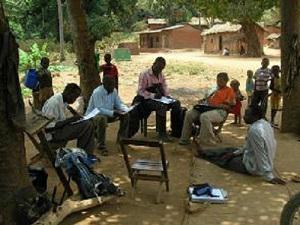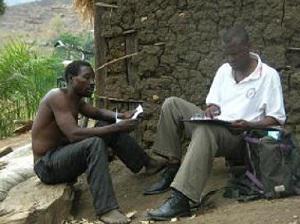Tuyeni Mwampamba
Other projects
26 Oct 2006
Carbon Sequestration in Soils and Biomass of Regenerating Tropical Forests in Tanzania
7 Jul 2009
Carbon Sequestration in the Soils and Biomass of Regenerating Forests in the South Nguru Mountains, Tanzania
The aim of the project is to evaluate local natural resource institutions in terms of their ability to simultaneously fulfil the conservation and poverty alleviation objectives inherent of ecosystem service payment programs

Payments for ecosystem services (PES) are a means by which local communities are financially rewarded to sustainably manage natural resources for a larger local, regional and/or international community. Ecosystem services (ESs) are not equally distributed across the landscape, however, and land distribution is also often unequal. In the interest of maximizing land under PES and reducing transaction costs, payment programs can marginalise the poor, exacerbate inequalities, and fail to increase land under conservation or sustainable management. Additionally, strong local institutions that represent the poor and distribute benefits equitably are often lacking.

In Africa, the potential for PES to improve rural livelihoods is often considered more valuable than the ES at which the payments are directed. Developing programmes that fulfill conservation and development objectives simultaneously is thus challenging, because the focus on poverty alleviation can undermine conservation efforts. The tradition of maintaining secondary forests in many African agriculture systems is an opportunity to test the potential to weld these dual objectives. In the South Nguru Mountains (SNM) of Tanzania, secondary forests are important repositories for endangered and endemic species, and a necessary component of maintaining local and global genetic diversity in the larger Eastern Arc Mountains. The data collected in this project will enable us to determine how ES provision can be a viable land use option for communities in SNM that complements ongoing conservation efforts outside of forest reserves.
This work is going to identify the socio-economic disparities across communities in SNM in order to identify PES modalities that are effective at simultaneously fulfilling conservation and poverty alleviation objectives in the area. Directly rewarding communities for their conservation actions has been linked with an increase in local environmental stewardship. Thus, in the long-run, PES will increase awareness, appreciation and protectionism by communities of their own local surroundings. In order to identify which PES modalities are viable in the study area we will conduct a thorough classification of existing PES systems, and subsequently develop a system for evaluating them. This has yet to be done in the PES literature. The classification process will be a noteworthy accomplishment for PES in general because it will allow us to identify untried modalities.